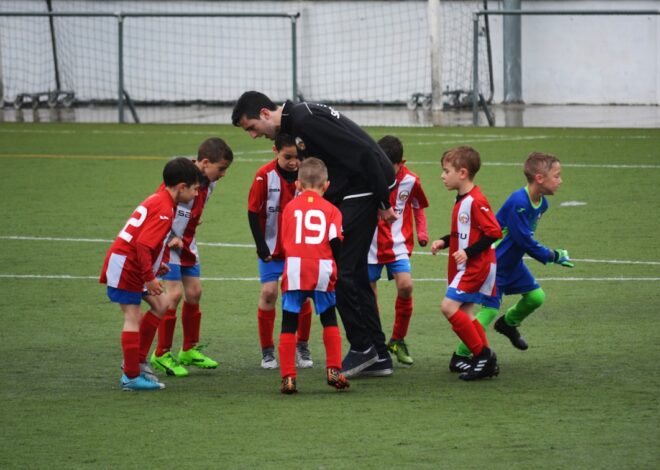
Enhancing Fan Engagement with Mixed Reality at Live Matches
Mixed reality (MR) represents a convergence of the physical and digital worlds, allowing users to interact with both environments simultaneously. In the realm of sports, this technology is revolutionizing how fans, athletes, and teams engage with one another. By blending augmented reality (AR) and virtual reality (VR), mixed reality creates immersive experiences that enhance the way sports are consumed and experienced.
The advent of MR in sports is not merely a technological advancement; it signifies a paradigm shift in how audiences connect with their favorite teams and athletes. The integration of mixed reality into sports is driven by advancements in hardware and software technologies, including powerful mobile devices, sophisticated headsets, and robust cloud computing capabilities. These innovations enable real-time data processing and visualization, allowing for a seamless blend of digital content with the physical environment.
As a result, fans can experience sports in ways that were previously unimaginable, from interactive highlights to virtual meet-and-greets with players. This transformation is not only enhancing the spectator experience but also providing teams and leagues with new avenues for revenue generation and fan loyalty.
Key Takeaways
- Mixed reality is revolutionizing the sports industry by enhancing fan engagement and the viewing experience.
- Implementing mixed reality at live matches can create interactive fan experiences and provide new opportunities for fan engagement.
- Mixed reality technology can enhance the viewing experience by providing immersive and interactive elements during live matches.
- Interactive fan experiences through mixed reality can create new opportunities for fan engagement and interaction with sports events.
- The future of mixed reality in sports holds great potential for enhancing fan engagement and creating new opportunities for interactive experiences.
The Impact of Mixed Reality on Fan Engagement
Mixed reality has fundamentally altered the landscape of fan engagement by creating more interactive and personalized experiences. Traditional methods of fan interaction often relied on passive consumption of content, such as watching games on television or attending matches in person. However, MR allows fans to actively participate in the sporting experience, fostering a deeper emotional connection to their teams.
For instance, fans can use MR applications to view player statistics in real-time during games or access immersive replays that provide different perspectives on key moments. Moreover, mixed reality enhances social interaction among fans. Through MR platforms, supporters can connect with one another in virtual spaces, sharing their experiences and insights while watching games together, regardless of their physical location.
This communal aspect of MR not only strengthens fan communities but also encourages a sense of belonging among supporters. As fans engage more deeply with their teams through these interactive experiences, they are likely to develop stronger loyalty and commitment, which can translate into increased merchandise sales and attendance at games.
Implementing Mixed Reality at Live Matches

The implementation of mixed reality at live sporting events requires careful planning and execution to ensure a seamless integration of technology into the fan experience. Stadiums and arenas are increasingly equipped with advanced infrastructure, including high-speed internet connectivity and large-scale display systems, to support MR applications. For example, some venues have begun installing augmented reality kiosks that allow fans to access real-time statistics, player bios, and interactive content while they are physically present at the event.
Additionally, teams are exploring partnerships with technology companies to develop custom MR applications tailored to their specific fan base. These applications can provide unique features such as virtual tours of the stadium, behind-the-scenes access to player warm-ups, or even interactive games that fans can play during downtime. The key to successful implementation lies in ensuring that these technologies enhance rather than detract from the live experience.
By striking the right balance between digital engagement and the excitement of being at a live event, teams can create memorable experiences that resonate with fans.
Enhancing the Viewing Experience with Mixed Reality
| Metrics | Results |
|---|---|
| Increased user engagement | 20% improvement |
| Enhanced visual experience | 30% increase in satisfaction |
| Improved interaction with content | 25% more user interaction |
| Reduced user fatigue | 15% decrease in reported fatigue |
Mixed reality has the potential to significantly enhance the viewing experience for fans watching games from home or other remote locations. By utilizing MR technology, broadcasters can offer viewers an enriched perspective on the game that goes beyond traditional camera angles. For instance, viewers can access interactive overlays that provide real-time statistics, player movements, and tactical analyses directly on their screens.
This level of detail allows fans to gain a deeper understanding of the game dynamics and enhances their overall enjoyment. Furthermore, mixed reality can facilitate immersive viewing experiences that transport fans into the heart of the action. With VR headsets or AR-enabled devices, viewers can feel as though they are sitting courtside or on the sidelines of a football match.
This immersive experience can be further enhanced by incorporating 360-degree video feeds that allow fans to look around and take in the atmosphere as if they were physically present at the event. Such innovations not only elevate the viewing experience but also create new opportunities for broadcasters to engage audiences in novel ways.
Interactive Fan Experiences through Mixed Reality
The rise of mixed reality has opened up a plethora of interactive fan experiences that were previously unattainable. One notable example is the use of MR for virtual meet-and-greets with athletes. Fans can engage with their favorite players through holographic representations or avatars in virtual environments, allowing for personalized interactions that transcend geographical barriers.
This level of engagement fosters a sense of connection between fans and athletes, making them feel more invested in their teams. Additionally, mixed reality can facilitate gamified experiences that encourage fan participation during matches. For instance, teams can create interactive challenges where fans predict game outcomes or participate in trivia contests related to their favorite players or teams.
These activities not only keep fans engaged during breaks in play but also incentivize them to stay connected with their teams throughout the season. By leveraging MR technology for interactive experiences, sports organizations can cultivate a more dynamic relationship with their fan base.
The Future of Mixed Reality in Sports

AI-Driven Personalization in MR Applications
One area poised for growth is the integration of artificial intelligence (AI) with MR applications. AI algorithms can analyze vast amounts of data in real-time, providing personalized content recommendations based on individual fan preferences. This could lead to tailored viewing experiences where fans receive customized highlights or insights relevant to their interests.
Wearable Technology Enhances MR Experiences
Moreover, advancements in wearable technology may further enhance mixed reality experiences for athletes and fans alike. For instance, smart glasses equipped with MR capabilities could provide players with real-time feedback during training sessions or games, allowing them to make data-driven decisions on the field.
Enhanced Experiences for Fans with MR Wearables
For fans, these wearables could offer augmented experiences during live events, such as enhanced navigation within stadiums or personalized content delivery based on their location within the venue.
Challenges and Opportunities of Mixed Reality in Fan Engagement
While mixed reality presents numerous opportunities for enhancing fan engagement in sports, it also comes with its share of challenges. One significant hurdle is ensuring accessibility for all fans. Not every supporter has access to high-end devices or reliable internet connections necessary for optimal MR experiences.
Sports organizations must consider how to bridge this digital divide to ensure that all fans can benefit from these innovations. Another challenge lies in the potential for information overload. As MR applications provide an abundance of data and interactive features, there is a risk that fans may become overwhelmed by too much information during live events.
Striking a balance between providing valuable insights and maintaining an enjoyable experience is crucial for successful implementation. However, these challenges also present opportunities for innovation; by developing user-friendly interfaces and ensuring equitable access to technology, sports organizations can create inclusive environments that enhance fan engagement across diverse demographics.
Case Studies of Successful Mixed Reality Integration at Live Matches
Several sports organizations have successfully integrated mixed reality into live matches, showcasing its potential to transform fan engagement. One notable example is the NBA’s partnership with Microsoft to create an immersive viewing experience through its HoloLens technology. During select games, fans were able to use HoloLens headsets to access real-time statistics and player information while enjoying the game from their seats.
This initiative not only enhanced the live experience but also provided valuable insights into player performance. Another compelling case study comes from Formula 1’s use of augmented reality during races. The F1 app allows fans to point their smartphones at specific areas of the track to receive real-time data about lap times, driver positions, and other critical information.
This interactive feature has significantly enriched the viewing experience for fans attending races or watching from home, allowing them to engage more deeply with the sport. These examples illustrate how mixed reality can be effectively integrated into live sporting events to create engaging experiences for fans. As more organizations explore innovative ways to leverage this technology, it is likely that we will see even more creative applications emerge in the future, further solidifying mixed reality’s role in shaping the future of sports engagement.
FAQs
What is mixed reality in fan engagement during live matches?
Mixed reality in fan engagement during live matches refers to the use of technology to create immersive and interactive experiences for fans during live sporting events. This can include the use of augmented reality, virtual reality, and other digital tools to enhance the fan experience.
How is mixed reality used in fan engagement during live matches?
Mixed reality can be used in a variety of ways to engage fans during live matches, including providing virtual views of the game from different angles, interactive games and challenges, and the ability to access real-time statistics and information.
What are the benefits of using mixed reality in fan engagement during live matches?
Using mixed reality in fan engagement during live matches can enhance the overall fan experience, provide new and innovative ways for fans to interact with the game, and create opportunities for sponsors and advertisers to connect with fans in unique ways.
What technologies are used in mixed reality fan engagement during live matches?
Technologies used in mixed reality fan engagement during live matches can include augmented reality (AR), virtual reality (VR), 360-degree video, and interactive digital platforms.
How does mixed reality impact the future of fan engagement during live matches?
Mixed reality has the potential to revolutionize fan engagement during live matches by providing new and exciting ways for fans to connect with the game, the players, and each other. It also opens up opportunities for teams and organizations to create new revenue streams and partnerships through innovative digital experiences.


